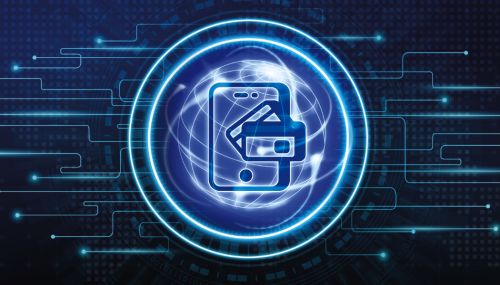All
Controlling Costs and Staying Competitive
by Ed Burke, Dennis K. Burke Inc.

It’s the endless pursuit of controlling costs that drives us to innovate—finding new ways to be more productive and run our companies more efficiently. Fortunately, there are some pretty useful tools out there that are also up to the task.
Finding Real Time-Savers
In terms of increasing productivity and day-to-day savings, putting tablets in the trucks was a smart choice for our company. The primary app we chose for the tablet is fleet management software. It integrates GPS tracking and mapping that was very similar to our previous software but also pulls driver and vehicle data into the package.
In the cab, the program creates and records electronic versions of the required Driver’s Daily Logs (DDLs) and Driver’s Vehicle Inspection Reports (DVIRs) for the drivers. Drivers say that the program’s electronic DDLs are easy to use and save them about two hours each week, compared to the paper versions.
We’re reducing a lot of administrative costs there too. No more sorting through stacks of paper each day, reviewing DDLs, and then filing them away for six months. It’s paperless now. All of the drivers’ DDLs can now be reviewed in a single report, and you can drill down for more information about individual drivers.
The software also reports IFTA quarterly tax information. In the past, drivers would manually record miles-per-state each day, and accounting would then enter the mileage data into spreadsheets.
The program adds a new dimension to the dispatcher’s toolbox. The software integrates GPS mapping, fleet data, and driver information into a single program with easy-to-use electronic reports.
To help schedule deliveries, dispatchers would create spreadsheets each morning to track a driver’s available hours of service. Now, the program offers the dispatcher quick tools to check a driver’s hours for service in real time.
If a dispatcher needs to respond to an emergency delivery, he can see what units are in the vicinity by typing in an address. The software lists which units are closest, how many miles away, who is driving those trucks, and even how many available in-service hours those drivers have.
Now the garage can quickly view a screen of faults reported by drivers on their DVIRs, as well as engine code faults from the vehicles.
Saying Goodbye to Time Clocks
We’re seeing savings with our payroll app too. Drivers now punch in and out directly from the tablet, instead of using a time clock system at remote locations.
We also had drivers calling in their hours, and someone would then enter their hours into payroll.
Drivers can now put in for time off and have it approved through the tablet, eliminating the exchange of paperwork we had. Drivers can see how much sick time they have available, or schedule their vacation days, right in the program.
Reducing Risk
Simple tools can help a company be more proactive at reducing risk to control costs. For example, we put a written cell phone policy in place a few years ago. In short, it says that drivers, when in a company vehicle, are not to be talking on a cell phone, unless the vehicle is safely pulled off to the side of the road, or at a delivery site.
We knew distracted driving was a huge safety issue and we needed to get ahead of it. Beyond the serious safety concerns, we had to look at the liability realities too. Cell phone records are typically checked when investigating major accidents. Violations can also bring some hefty fines, and impact Safety Measurement System (SMS) scores for both the company and the driver.
We liked the idea of locking down the phone when it was in motion, so we found a smart phone app that costs about five dollars a month for each phone and requires smart phones with a data plan.
Basically, the app uses the phone’s GPS to determine when the vehicle is in motion, and then locks down the phone. While driving, the app determines if you’re stopped at a red light or arriving at your destination. If unsure, it allows the driver to press a button to let the app know that he is at his destination, which unlocks the cell phone.
Our dispatch office can also signal the driver to pull over when it’s safe to do so, and then call back the dispatcher. That way, the driver can be reached when there is an emergency, or if he needs to be contacted before he gets to the next delivery site.
You can go to a website and monitor your fleet’s compliance data. It can show you things like someone making a call while pulled over, but continuing the call while driving. It can also alert you if a driver tries to disable the application.
So what’s next for your business?
Related Posts
 Remote Tank Monitoring Supports Better Decision-Making and Operational Efficiency
Remote Tank Monitoring Supports Better Decision-Making and Operational Efficiency
Posted on August 18, 2025
 What’s Next in Boiler Technology
What’s Next in Boiler Technology
Posted on June 25, 2025
 Data Delivers!
Data Delivers!
Posted on April 28, 2025
 Harnessing Payment Data to Increase Profitability
Harnessing Payment Data to Increase Profitability
Posted on March 10, 2025
Enter your email to receive important news and article updates.
